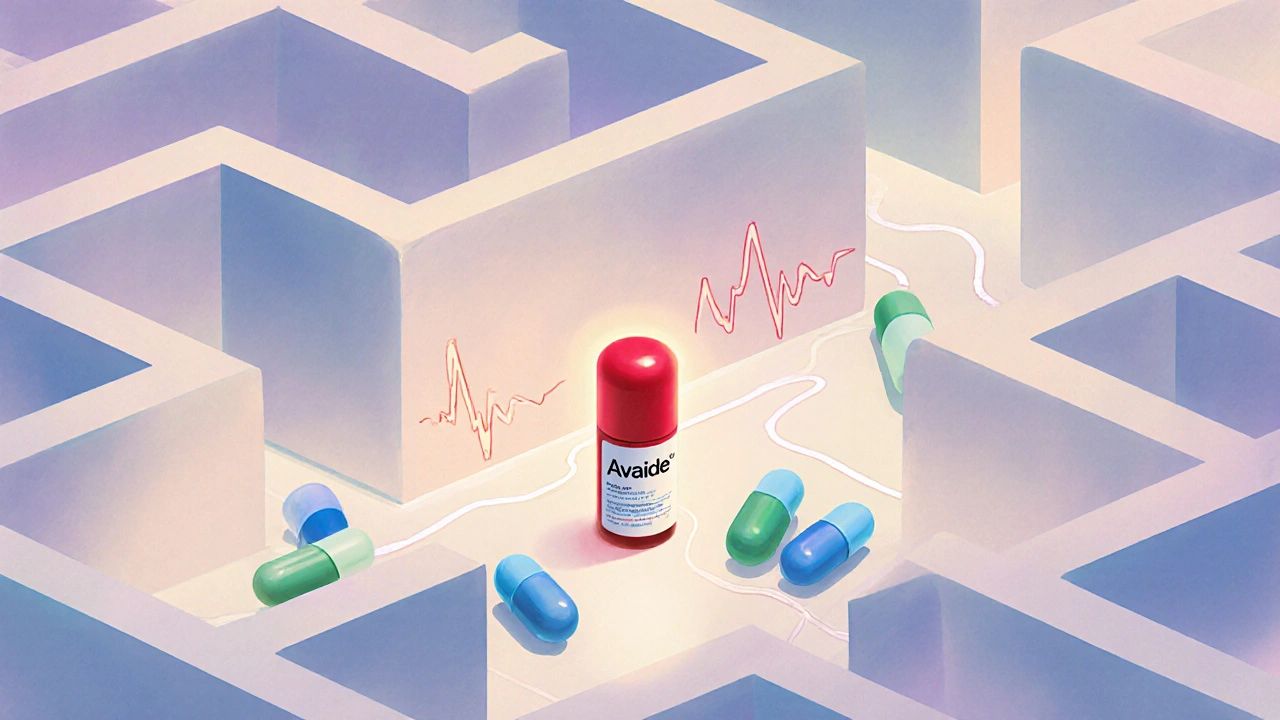ARB Alternatives – Your Guide to Blood Pressure Medication Choices
When looking at ARB alternatives, medications that can replace or supplement angiotensin II receptor blockers for treating high blood pressure. Also known as alternative antihypertensives, they offer different mechanisms and side‑effect profiles. If you’ve heard the term and wonder what it really means, you’re in the right spot. Below we break down the main drug families, why they matter, and what to keep in mind before you switch or add a new pill.
Key Drug Families and How They Relate
One common class is the Angiotensin II Receptor Blocker (ARB), drugs that block the action of angiotensin II to relax blood vessels. ARBs like losartan and valsartan are often the first choice for many doctors because they’re easy on the kidneys. ARB alternatives encompass ACE inhibitors, offering a different pathway to lower blood pressure.
Another major group is ACE inhibitors, agents that inhibit the conversion of angiotensin I to angiotensin II. They tend to lower blood pressure aggressively, but cough is a common side effect. Choosing an ARB alternative requires understanding your target blood pressure and any co‑existing conditions such as diabetes or chronic kidney disease.
Calcium channel blockers form the third pillar of hypertension therapy. Calcium channel blockers, medications that prevent calcium from entering heart and vessel cells, thus relaxing arteries work well for people whose blood pressure spikes at night. They’re also useful when you need to avoid the dry cough linked to ACE inhibitors.
We can’t forget the condition itself. Hypertension, a chronic elevation of arterial pressure that raises the risk of heart attack, stroke, and kidney damage drives all these drug choices. The severity, age, and lifestyle of the patient decide which alternative fits best.
Among the newer options, Azilsartan has drawn attention. Azilsartan influences metabolic syndrome management, making it a noteworthy option among ARB alternatives. Clinical data suggest it may lower blood pressure more than older ARBs while keeping electrolyte balance stable. If you have metabolic concerns, it’s worth discussing with your doctor.
Understanding drug interactions also matters. For example, combining an ACE inhibitor with a potassium‑sparing diuretic can raise potassium to risky levels. Likewise, adding a calcium channel blocker to a beta‑blocker may cause overly slow heart rates. Mapping these interactions helps you avoid unwanted side effects.
Cost is another practical factor. Generic ACE inhibitors and older ARBs are often cheap, while newer agents like azilsartan may carry a premium. Some insurance plans treat them differently, so checking coverage before you start can save you a lot of money.
When you decide to switch, the transition plan matters. Tapering off an ARB and starting an ACE inhibitor on the same day can cause a sudden drop in blood pressure. A stepwise approach—reduce the ARB dose, monitor blood pressure, then add the new medication—helps maintain stability.
Finally, lifestyle still plays a huge role. No medication beats a balanced diet, regular exercise, and reduced sodium intake. Even the best ARB alternative won’t fully control blood pressure if those basics are ignored.
Below you’ll find a curated list of articles that dig deeper into each of these topics—comparisons, safety tips, buying guides, and condition‑specific advice. Whether you’re hunting for the cheapest generic option, need a side‑effect rundown, or want to understand how a particular drug fits into your overall health plan, the collection has you covered.
Avalide (Irbesartan) vs. Other Blood Pressure Drugs: A Practical Comparison
A clear comparison of Avalide (Irbesartan) with other blood pressure drugs, covering effectiveness, side effects, cost, and when to choose each option.

